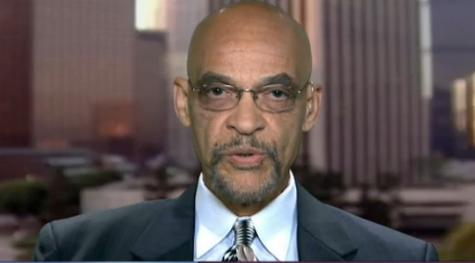Earl Ofari Hutchinson
There was a grand total of eighty words in the Democrat’s 2016 party platform on farm policy and rural development. The Democrats blind spot to rural voters didn’t totally tell the story of why Trump scored big with non-college educated white rural voters against Democratic rival Hillary Clinton. She didn’t totally neglect rural voters as the narrative on her defeat says. She talked a lot about her family’s coal miner roots and campaigned in a few rural areas. It didn’t change anything. The rurals still overwhelmingly went for Trump. Now, Democratic presidential candidates say they learned from that and are trying hard to pry at least some of these voters from Trump in 2020.
That’s a good thing. But they’re getting only part of it right about why and how Trump shoved these voters in his electoral pocket. The candidates are spending lots of time in Iowa, Wisconsin, Pennsylvania making the voter rounds. They’ve put forth a grab bag of programs that call for spending billions on rural schools, ramping up farm credits and subsidies, attacking the Opioid crisis, targeting business program and training for rural areas, and a big ambitious program to cyber wire farmland.
The problem is that Trump didn’t overwhelm the Dems with rural voters because he had a terrific farm program or because he camped out in these areas while Clinton camped out in the Blue State’s big cites. Trump offered almost nothing of any substance for rural voters but still worked them into a frenzy at his rallies. The minute he was safely tucked in the Oval Office, he did everything to hurt them. That includes cuts in farm subsidies, a crippling tariff war that slams domestic farmers, lip service to the Opioid crisis, a relentless assault on Medi Cal which legions of the rural poor rely on and doing nothing to halt the continued flight of industry from a lot of rural areas. This has done little to dampen their love affair with him.
The reasons aren’t hard to find. Trump is hardly the first GOP presidential candidate to bag the bulk of the white rural vote. They’ve been a pillar of GOP presidential and state power stretching back to the Nixon years. His big, overblown MAGA rallies in the Heartland just cast the media glare on this.
Long before Trump, reporters took note of the mania of white rural voters for the GOP. There were lots of warnings that these voters were locked into the GOP. Many complained long and loud about being neglected and ignored, or worse, mocked, ridiculed, and made the butt of jokes as ignorant, tobacco chewing redneck hillbillies and bumpkins. This negative depiction stoked the fury of rural voters against the “elites.” There were loud grumbles that the Democrats bought into the stereotypes about them, with a special emphasis on their being white and racist.
The GOP played hard on this with its litany of throw away race tinged code words and terms “big oppressive government,” “tax and spend liberals” and “the beltway elite.” It played even harder on the notion that all federal money, initiatives and programs were ladled out in handouts to Blacks and Hispanics, while rural kids got the shaft. The only thing that the white rural poor could look forward to was getting high on Meth and Opioids, and watching industry flee the rural belt for those reviled big cities.
Trump went one better. He skipped the racist code words and flatly fingered crime prone illegal immigrants and Blacks that Democrats supposedly shamelessly pandered to as the reason why those out in the hinterlands wallowed in pain and poverty. It worked. In private surveys a lot of white rural voters candidly said that they believed much of what Trump said about why and more particularly who was he cause of their plight.
This had nothing to do with Trump’s rail against industry flight overseas, job loss, and his bogus promise to bring prosperity back to Appalachia, central Wisconsin, Michigan and Pennsylvania. The issue was race, or racial fear, and Trump’s expert inflaming that fear that made the difference. Trump has made clear that he aims for a repeat in 2020. And judging from the even bigger turnout for his rallies in the Heartland, his ploy may pay dividends again.
Democrats must continue to talk up rural and farm issues in farm country, put forth programs that target rural voters, and keep making appearance in those areas. There’s more. Trump won by less than one percent in the swing top-heavy farm states. He did that largely on the backs of the non-college white rural voters. But they aren’t the only voters in those areas. The demographics of rural areas are fast changing. There are a lot of Hispanics and Blacks, and younger whites who are college educated in rural areas. They can be a partial counter to offset the GOP’s band of older white voters. A strategy to mobilize them could be the difference in how much success the Democrats have in hoeing the road in farm country in 2020.
Earl Ofari Hutchinson is an author and political analyst. He is the author of Who Can Beat Trump?: America’s Choice 2020https://www.amazon.com/dp/B07KVM86C6 He is a weekly co-host of the Al Sharpton Show on Radio One. He is the host of the weekly Hutchinson Report on KPFK 90.7 FM Los Angeles and the Pacifica Network.

